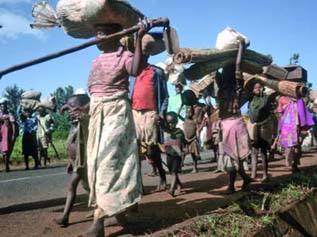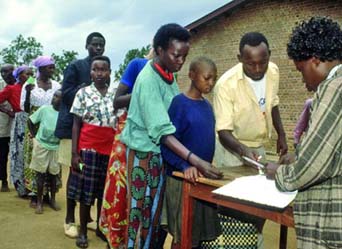MANY FAILURES IN THE OUTCOMES of programmes and policies are due to the assumption that large groups of people are homogeneous, rather than men, women, youth and various disadvantaged groups with different needs and interests. Lessons learned reveal that interventions to save lives and secure livelihoods in emergencies are more efficient and effective when gender differences are properly understood and addressed.
Full community involvement, including women's active participation, improves the efficacy of prevention, relief, reconstruction and transformation efforts. It is also essential for sustainable development of their resilience (adaptive and operational capacities).
In 1999, the United Nations Interagency Standing Committee issued a statement on gender and humanitarian assistance, requiring all member organizations to formulate specific strategies to integrate gender issues, collect and analyse data from a gender perspective, build capacity for gender programming, and develop reporting and accountability mechanisms that ensure attention to gender.

FAO'S ROLE in natural and human-induced disasters is guided by the commitments set forth in the Rome Declaration on World Food Security and the World Food Summit Plan of Action. (FAO Emergency Activities: Technical Handbook Series).
www.fao.org/docrep/003/x6868e/x6868e00.htm
THE BURDEN ON WOMEN IN MOZAMBIQUE
In 2003 nearly 57 percent of the Mozambican adults (15-49 years) living with HIV/AIDS was women. Within the age group of 20-24 years, women living with HIV outnumbered men by four to one. More than 230 000 children had lost their mothers or both parents in 2001 due to AIDS. The number of households headed by elderly or children had risen, and a special effort to train children in food production techniques and nutrition is urgently required.
The compounding effects of HIV/AIDS and repeated natural disasters have significantly increased the vulnerability of an already impoverished population (67 percent of the population affected by recurrent drought with the highest HIV prevalence in the country).

Source: FAO, 2004a.